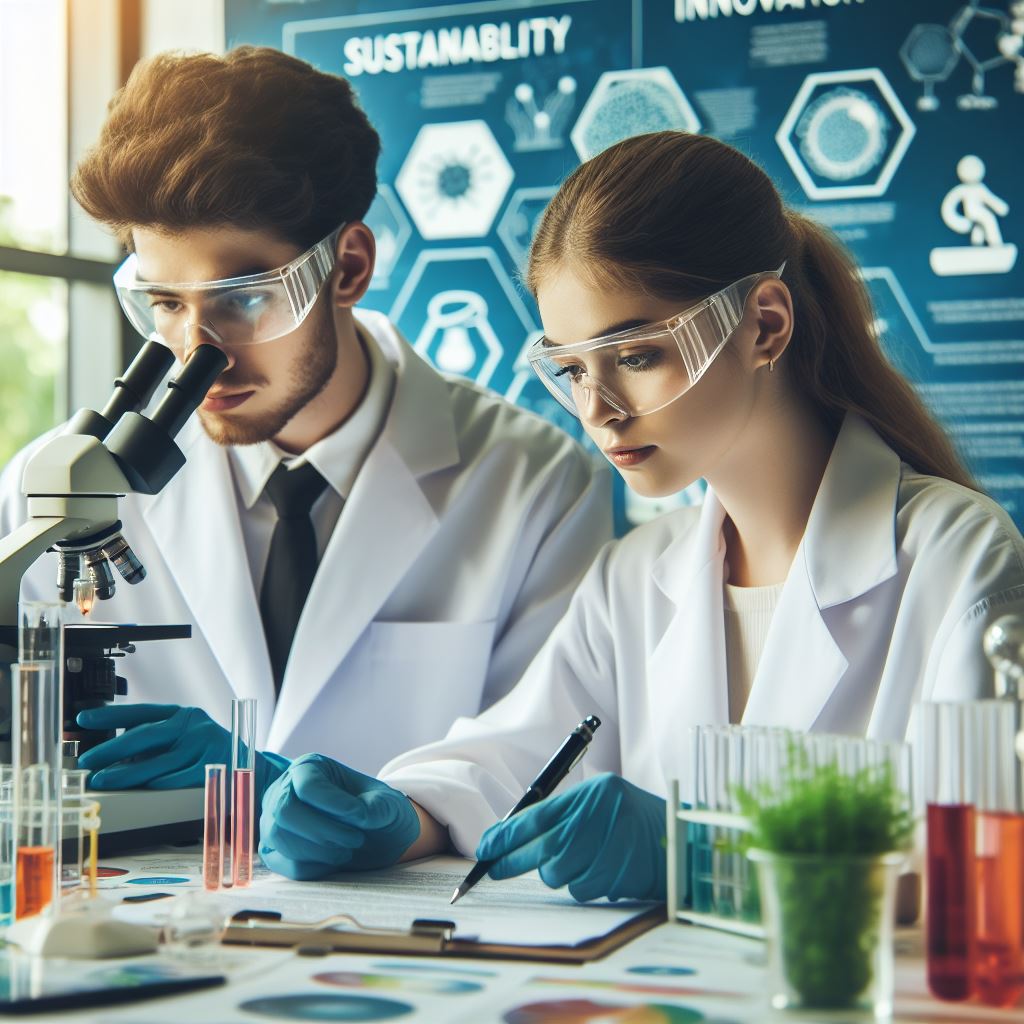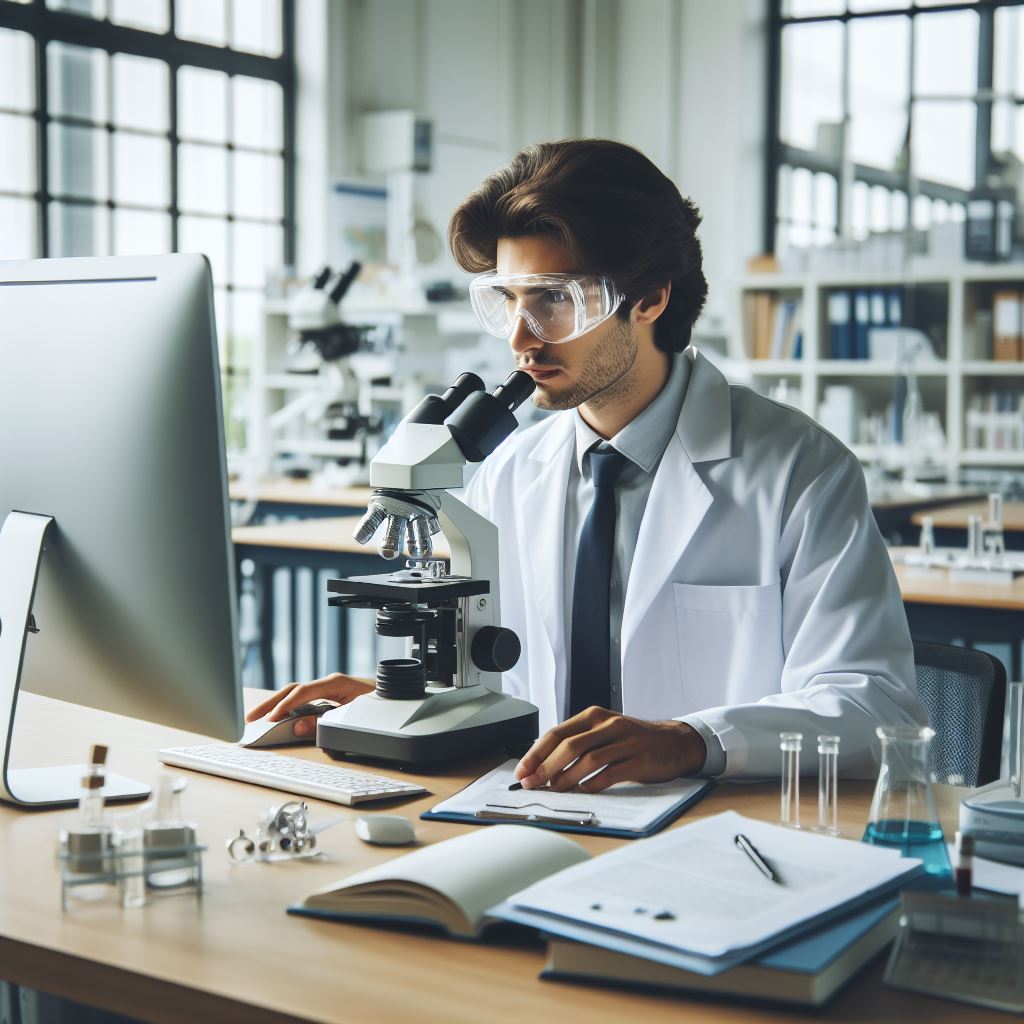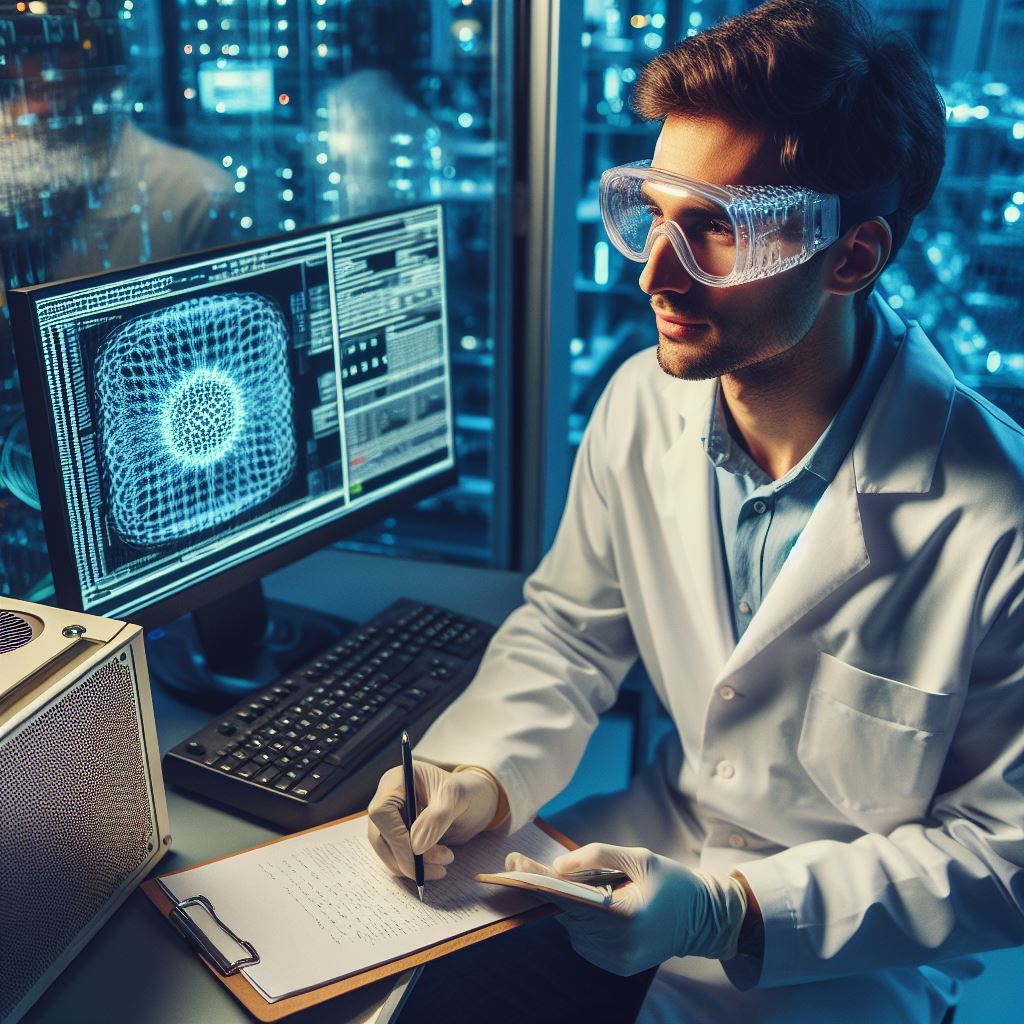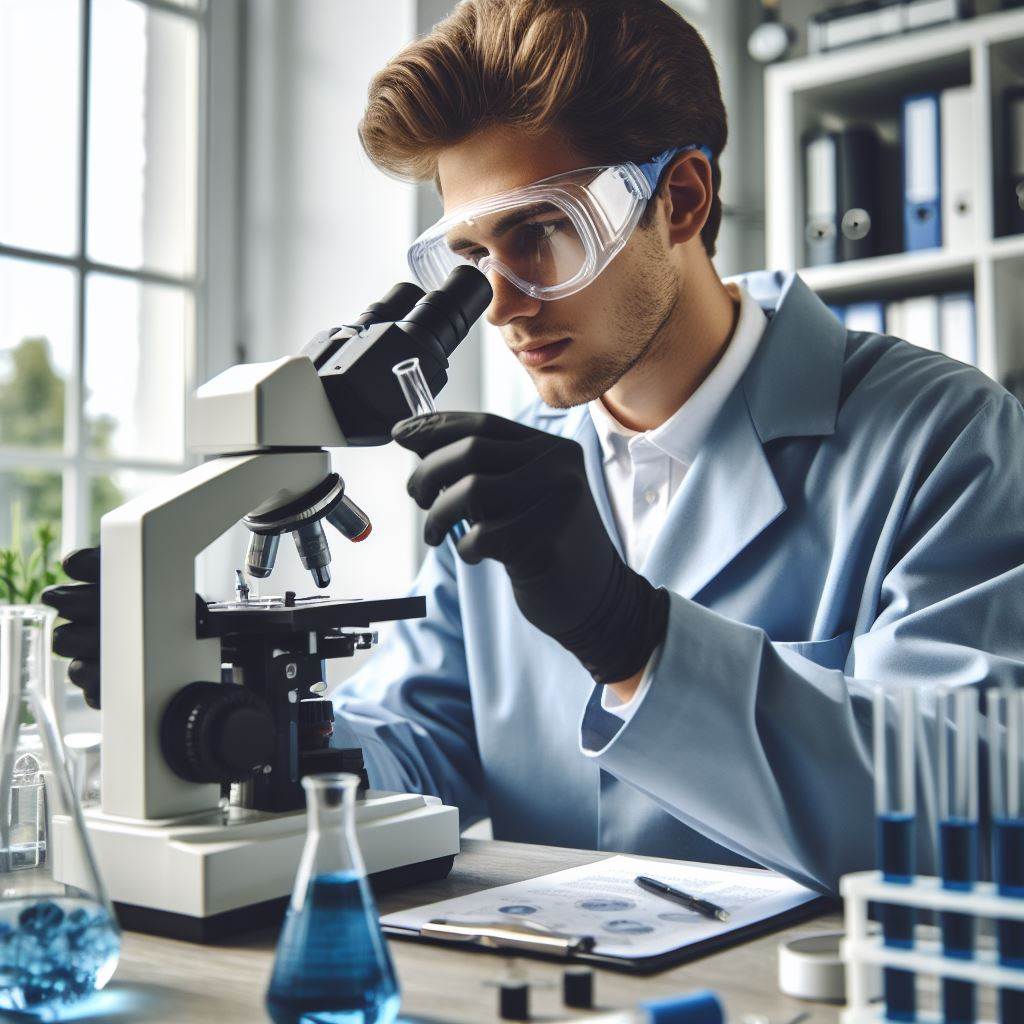Introduction
Lab safety
Lab safety is crucial for Australian technicians as it ensures their well-being and prevents accidents that could have dire consequences. lets discuss on Techs Lab Safety
With potential hazards lurking in laboratories, it becomes imperative to prioritize safety measures. So, let’s delve into the importance of lab safety for Aussie techs and understand how it impacts their work.
Importance of lab safety for Australian technicians
In a dynamic field like science, lab safety acts as a shield that safeguards technicians from potential harm.
Adhering strictly to safety protocols helps minimize the risk of accidents and ensures a secure working environment.
Aussie techs must be well-versed in handling hazardous substances, correct disposal methods, and proper use of equipment.
Complacency towards lab safety can lead to severe injuries, damage to property, and legal ramifications.
With proper safety training, technicians develop a keen sense of awareness, enabling them to identify and mitigate potential risks.
In any laboratory setting, safety should be the top priority to avoid mishaps that could disrupt ongoing experiments.
A catchy hook grabs readers’ attention: “Don’t let an avoidable accident in the lab tarnish your scientific pursuits.”
Implementing lab safety measures engenders a culture of responsibility and accountability among Australian technicians.
By fostering a safe work environment, organizations demonstrate their commitment to the well-being of their scientific staff.
Australian technicians recognize that lab safety is not a choice but an essential aspect of their professional journey.
Lab safety is not an afterthought for Aussie techs; it is the cornerstone that ensures their protection and success in the scientific realm.
Why is Lab Safety Important?
In the world of scientific research, lab safety is of utmost importance. It is not just a box to check, but a fundamental practice that ensures the well-being of both technicians and the public.
Lab work involves various potential hazards and risks that can have serious consequences. Therefore, it is essential to understand and implement proper safety measures.
Discuss the potential hazards and risks involved in lab work
Let’s discuss the potential hazards and risks involved in lab work. Chemicals are an integral part of any laboratory, and mishandling them can lead to disastrous outcomes.
Exposure to toxic chemicals, corrosive substances, or flammable materials can result in severe injuries or even fatalities. Improper storage or disposal of chemicals can lead to environmental contamination and long-term consequences.
Another significant hazard in the lab is biological materials, such as bacteria, viruses, or fungi. Mishandling or exposure to these organisms can result in infections or the spread of diseases.
It is crucial for technicians to understand proper protocols for handling and disposing of biological materials to prevent any potential harm.
Your Personalized Career Strategy
Unlock your potential with tailored career consulting. Get clear, actionable steps designed for your success. Start now!
Get StartedMoreover, physical hazards like heat, radiation, or sharp objects can pose risks. Inadequate protective measures when working with extreme temperatures can lead to burns or thermal injuries.
Exposure to radiation without proper shielding can cause radiation sickness or long-term health issues. Mishandling sharp objects, such as needles or glassware, can result in cuts or puncture wounds.
Importance of protecting oneself and others
Besides protecting oneself, lab safety also extends to protecting others. The laboratory is often a shared space where multiple technicians work simultaneously.
Failure to adhere to safety protocols not only endangers individual technicians but also puts others at risk. Spills, leaks, or cross-contamination can affect the entire workspace, compromising the integrity of experiments and potentially leading to inaccurate results.
Additionally, lab safety is crucial to prevent incidents that can cause damage beyond the laboratory setting. Accidents, like explosions or fires, can have severe consequences.
Not only can they cause physical injuries, but they can also result in property damage or even impact neighboring areas. Maintaining proper safety measures minimizes the likelihood of such incidents and ensures the protection of both personnel and surrounding environments.
Examples of accidents or incidents that emphasize the need for lab safety
To emphasize the need for lab safety, let’s delve into a few examples of accidents or incidents that have occurred in the past.
The Texas Tech University chemical explosion in 2010 serves as a stark reminder of the potential hazards associated with improper handling of chemicals.
The explosion claimed the life of a graduate student and severely injured another, highlighting the devastating consequences of negligence.
Another example is the infamous Chernobyl disaster in 1986. The incident, caused by a combination of human error and design flaws, resulted in a catastrophic nuclear meltdown.
The aftermath of the Chernobyl disaster continues to have long-lasting effects on the environment and human health. It serves as a chilling reminder of the importance of adhering to strict safety protocols, especially in high-risk environments like laboratories.
Generally, lab safety is of paramount importance due to the potential hazards and risks involved in lab work. It is vital to prioritize the well-being of technicians and the public by implementing proper safety precautions.
Failure to adhere to these measures can result in serious accidents, injuries, or even catastrophic incidents with far-reaching consequences.
Every lab should make lab safety a primary concern, ensuring a secure and productive environment for scientific research and experimentation.
Australian Regulations and Standards
When it comes to lab safety, Australian regulations and standards play a crucial role in ensuring the well-being and protection of technicians in laboratory environments.
These regulations have been set by relevant Australian authorities to maintain a safe and secure working atmosphere, free from hazards that may cause harm to individuals or the environment.
How do these regulations ensure safety in laboratory environments?
The regulations and standards set by Australian authorities are designed to provide guidelines and procedures to be followed in laboratory settings.
They establish protocols and safety measures that technicians must adhere to, with the aim of minimizing risks and preventing accidents.
One of the key regulations is the Work Health and Safety Act 2011, which outlines the general principles, duties, and obligations that employers, employees, and other parties must follow to promote health and safety in the workplace.
This Act emphasizes the preventive approach, focusing on identifying and eliminating risks rather than reacting to accidents.
The Australian/New Zealand Standard AS/NZS 2243.1:2010 provides a comprehensive framework for the management of laboratories and sets out specific requirements for design, construction, maintenance, and operation.
This standard covers aspects such as storage and handling of hazardous substances, ventilation, emergency procedures, and signage.
Furthermore, the National Occupational Licensing Scheme (NOLS) regulates the licensing of occupations, including laboratory technicians, to ensure that only competent and qualified individuals perform specific tasks, reducing the likelihood of errors or accidents due to inadequate skills or knowledge.
Technicians are also required to comply with the guidelines set by the Australian Radiation Protection and Nuclear Safety Agency (ARPANSA) if they handle radioactive materials or operate radiation-emitting devices.
These guidelines aim to prevent or minimize radiation exposure and its associated risks.
Key regulations and standards that technicians should be aware of
- The Work Health and Safety Act 2011: Provides general principles, duties, and obligations regarding health and safety in the workplace.
- Australian/New Zealand Standard AS/NZS 2243.1:2010: Sets specific requirements for the management and operation of laboratories.
- National Occupational Licensing Scheme (NOLS): Regulates the licensing of occupations, including laboratory technicians.
- Guidelines by the Australian Radiation Protection and Nuclear Safety Agency (ARPANSA): Pertinent for technicians handling radioactive materials or radiation-emitting devices.
It is essential for technicians to familiarize themselves with these regulations and standards to ensure they can perform their duties safely.
By following these guidelines, technicians contribute to the overall safety of laboratory environments and minimize the potential for accidents or injuries.
Stand Out with a Resume That Gets Results
Your career is worth more than a generic template. Let us craft a resume and cover letter that showcase your unique strengths and help you secure that dream job.
Get HiredEssence, the Australian regulations and standards pertaining to lab safety play a vital role in safeguarding the well-being of technicians.
These regulations provide a framework that ensures the implementation of safety protocols and procedures, mitigating risks and creating a secure working environment in laboratories.
Read: Innovative Chemistry Startups in Australia
Essential Lab Safety Practices
Lab safety is paramount in ensuring a safe and productive work environment for technicians.
By adhering to fundamental safety practices, all technicians can minimize the risk of accidents and injuries. Here are some essential safety practices that should be followed:
Proper Attire
- Wear appropriate clothing that covers your body, including long pants and closed-toe shoes.
- Avoid loose clothing, jewelry, and accessories that might get entangled in equipment.
- Tie back long hair and avoid wearing contact lenses to prevent eye injuries.
Personal Protective Equipment (PPE)
- Always wear necessary PPE such as gloves, safety glasses, and lab coats.
- Select the appropriate type of gloves depending on the chemicals and materials being handled.
- Use respiratory protection, like masks, in areas with potential airborne contaminants.
Hygiene
- Frequent handwashing before and after handling chemicals, specimens, or equipment is crucial.
- Avoid touching your face, mouth, or eyes while working in the lab.
- Dispose of used materials, chemicals, and waste properly to maintain cleanliness.
Adhering to Safety Protocols and Procedures
- Follow all lab safety protocols, including those related to equipment operation and handling hazardous substances.
- Understand and comply with emergency procedures, such as evacuation plans and fire extinguisher usage.
- Attend safety training sessions regularly to stay updated on best practices.
Proper Chemical Handling
- Label and store chemicals correctly, following the recommended storage conditions.
- Know and understand the properties and potential hazards of the chemicals you are working with.
- Use chemical fume hoods and ventilation systems when dealing with volatile substances.
Fire Safety
- Maintain clear access to fire extinguishers and emergency exits.
- Do not obstruct fire alarm pull stations and know the proper use of fire extinguishers.
- Learn and practice the “PASS” technique for using fire extinguishers – Pull the pin, Aim at the base of the fire, Squeeze the handle, Sweep from side to side.
Equipment and Electrical Safety
- Inspect equipment for any damage or malfunction before use.
- Do not use electrical equipment with frayed cords or exposed wires.
- Keep liquids away from electrical outlets and use ground fault circuit interrupters (GFCIs).
Proper Waste Disposal
- Segregate and dispose of different types of waste based on their potential hazards.
- Follow proper disposal methods for chemical waste, biological waste, and sharps.
- Refer to local regulations and guidelines to ensure compliance with waste management procedures.
By strictly adhering to these safety practices, technicians can create safer lab environments for themselves and their colleagues.
Everyone must prioritize safety to prevent accidents, injuries, and potential harm to the environment. Remember, safety is a responsibility shared by everyone in the lab!
Read: Must-Attend Chemistry Conferences in Aus
Chemical Handling and Storage
- Guidelines must be provided for the safe handling, storage, and disposal of chemicals.
- Proper labeling and documentation play a vital role in ensuring safety in chemical handling.
- Mishandling chemicals can lead to various risks and potential consequences that must be highlighted.
Guidelines for the safe handling, storage, and disposal of chemicals
Handling and storing chemicals in a safe and responsible manner is crucial to protect the well-being of laboratory technicians and prevent potential accidents or hazards. It is essential to follow guidelines and protocols to ensure the safe handling, storage, and disposal of chemicals.
Importance of proper labeling and documentation
Proper labeling and documentation are fundamental aspects of chemical handling. All containers should be clearly labeled with the chemical’s name, hazard symbols, and any necessary warnings.
Accurate and up-to-date documentation helps technicians identify and understand the chemicals they are working with, reducing the risk of mishandling or confusion.
The consequences of mishandling chemicals can be severe. Exposure to hazardous substances can cause immediate or long-term health effects, ranging from skin irritations and respiratory issues to severe burns and even life-threatening conditions.
It is crucial to be aware of the potential risks associated with improper chemical handling.
Risks associated with mishandling chemicals and the potential consequences
Improper chemical storage and handling pose significant risks, including spills, fires, and explosions in laboratory settings.
Technicians need training in emergency response and access to appropriate protective gear to mitigate harm.
Understanding chemical compatibility is crucial to prevent violent reactions or toxic gas releases during mixing.
Chemicals should be stored in designated areas, away from heat and sunlight, following specific storage requirements.
Regular inspections identify hazards, maintain storage integrity, and manage inventory effectively.
Disposal protocols must comply with regulations to minimize environmental impact and ensure safety.
Proper chemical handling is vital for lab safety, minimizing risks and protecting the environment.
Equipment Safety
Lab safety is of utmost importance for Australian technicians. Besides following general safety protocols in the laboratory, technicians must also pay careful attention to equipment safety.
This section focuses on the safety measures related to operating and maintaining lab equipment, the importance of regular inspections and calibration, and provides tips on safe operation and troubleshooting common equipment issues.
Safety Measures for Operating and Maintaining Lab Equipment
- Always wear appropriate personal protective equipment (PPE) while operating lab equipment.
- Ensure that all equipment is properly installed, grounded, and connected to power sources as required.
- Read and understand the user manual or operating instructions before using any equipment.
- Keep equipment clean and free from dirt, debris, or spilled substances that might affect its performance.
- Regularly inspect equipment for any signs of wear, damage, or malfunctioning parts.
- Report any faulty or malfunctioning equipment to the appropriate authority immediately.
- Follow proper storage procedures for lab equipment when not in use to prevent damage or accidents.
The Importance of Regular Inspections and Calibration
- Schedule regular inspections of lab equipment to identify any potential hazards or issues.
- Inspect electrical cords, connectors, and plugs for signs of wear or damage regularly.
- Calibrate equipment regularly to ensure accurate and reliable results.
- Keep a record of inspections, calibrations, and maintenance tasks performed on each piece of equipment.
- Regularly check and maintain safety features, such as emergency stop buttons or safety interlocks.
Tips on Safe Operation and Troubleshooting Common Equipment Issues
- Before operating equipment, ensure you have received proper training and are familiar with its use.
- Follow the recommended operating procedures for each equipment and never take shortcuts.
- Do not attempt to repair or modify equipment unless you are trained and authorized to do so.
- If you encounter any unfamiliar or abnormal equipment behavior, stop using it and seek assistance.
- Regularly clean and lubricate moving parts of equipment for optimal performance.
- Never leave equipment unattended while in operation and keep distractions to a minimum.
- Dispose of hazardous materials produced by lab equipment properly and as per safety guidelines.
By following these safety measures and guidelines, Australian technicians can minimize the risk of accidents, maintain equipment reliability, and ensure a safe working environment in their laboratories.
Read: Australian Women in Chemistry: Trailblazers

Find Out More: AU’s Role in Space Research
Discover More: Salary Trends for Research Pros in AU
Transform Your LinkedIn for Maximum Impact
Elevate your professional brand with a LinkedIn profile that attracts recruiters, showcases your expertise, and maximizes opportunities. Stand out in your industry with a profile built for success.
Boost ProfileUncover the Details: Balancing Academia and Industry in Physics
Emergency Preparedness
In a laboratory, being prepared for emergencies is of utmost importance. Proper emergency preparedness can save lives and minimize damage to equipment and the environment.
Technicians need to know the location and proper use of safety equipment to effectively respond to any incident that may occur.
Knowing the Location and Proper Use of Safety Equipment
- Lab technicians must familiarize themselves with the location of safety equipment such as fire extinguishers, eye wash stations, shower rooms, and spill kits.
- Regular drills should be conducted to ensure technicians are well-practiced in handling emergencies and using safety equipment.
- It is important to understand the specific use of each piece of safety equipment to ensure its effectiveness during emergencies.
- All safety equipment should be regularly inspected, and any damaged or expired items should be replaced immediately.
Responding to Incidents
Lab technicians should be trained to respond quickly and effectively to various incidents that may occur in the laboratory, such as fires, spills, and injuries.
Fires
- Upon discovering a fire, technicians should immediately activate the fire alarm to alert others in the facility.
- If the fire is small and can be safely extinguished, technicians can use the appropriate fire extinguisher while following the PASS technique: Pull, Aim, Squeeze, and Sweep.
- In case of a large fire or if the fire cannot be controlled, technicians must evacuate the area and call emergency services.
- Do not use elevators during a fire; always use the stairs to evacuate the building.
Spills
- When a chemical spill occurs, technicians should immediately alert their supervisor and follow the proper spill response procedures specific to the substance.
- Spill kits should be accessible in the lab and technicians must know how to use them to contain and clean up the spill safely.
- Avoid direct contact with spilled chemicals, and wear appropriate personal protective equipment (PPE) when cleaning up the spill.
- Dispose of spill cleanup materials properly according to the lab’s waste management guidelines.
Injuries
- In the event of an injury, technicians must prioritize their safety and seek immediate medical attention for themselves or their colleagues.
- Know the location of first aid kits and be trained in basic first aid procedures to provide initial treatment before professional help arrives.
- Report any work-related injuries to the supervisor or safety officer to ensure proper documentation and follow-up actions.
- Implement measures to prevent injuries, such as wearing appropriate PPE and following safe work practices.
By being well-prepared for emergencies, lab technicians can effectively handle critical situations and minimize the potential risks associated with accidents.
Regular training, knowledge of safety equipment and procedures, and quick response times are key to ensuring everyone’s well-being in the laboratory.
Read: The Future of Green Chemistry in Australia
Training and Education
Emphasize the significance of ongoing training and education in lab safety
- Ongoing training and education are crucial for Aussie techs to ensure lab safety.
- Regular updates on safety protocols help techs stay aware of potential hazards.
- Continuous learning reduces the risk of accidents and promotes a safer working environment.
- Techs should prioritize attending workshops and seminars to enhance their knowledge and skills.
- Ongoing training allows techs to adapt to new equipment, technologies, and best practices.
Discuss the resources available for technicians to stay updated
- Online platforms and websites offer a wealth of resources for lab safety education.
- Websites like Lab Manager provide articles, webinars, and videos on safety procedures.
- Professional organizations like the Australian Scientific Laboratory Association (ASLA) offer training programs and workshops.
- Techs should follow reputable safety blogs and subscribe to industry newsletters.
- Collaborating with colleagues and sharing knowledge can also contribute to staying updated.
Encourage technicians to seek further training or certifications
- Techs should consider pursuing certifications like the Certified Lab Technician (CLT) designation.
- Advanced certifications enhance techs’ technical proficiency and demonstrate their commitment to safety.
- Seeking further training opportunities can lead to better career prospects and higher job satisfaction.
- Training programs can provide specialized knowledge in specific areas of lab safety, such as handling hazardous materials.
- Continuous professional development ensures technicians remain competent and knowledgeable throughout their careers.
Ongoing training and education are vital for Aussie techs to maintain lab safety.
The availability of resources such as online platforms, professional organizations, and industry blogs allows techs to stay updated.
Seeking further training and certifications can offer numerous benefits for techs’ career growth and overall competence in lab safety.
Learn More: Marine Biology Internships in Australia
Conclusion
Lab safety is paramount for Aussie techs to ensure a secure working environment and prevent accidents.
Following safety protocols and guidelines reduces the risk of mishaps and protects both individuals and the environment.
Techs must prioritize safety training, use protective equipment, and adhere to proper handling and storage procedures.
Awareness of potential hazards, such as chemical spills, fires, or explosions, is essential for maintaining safety.
Regular inspections and maintenance of equipment and facilities help identify and address safety concerns promptly.
Effective communication among team members fosters a culture of safety and encourages reporting of hazards.
Prioritizing lab safety is crucial for Aussie techs to promote a safe and healthy workplace environment.
Adhering to safety protocols safeguards against accidents, protects personnel, and upholds professional standards.




